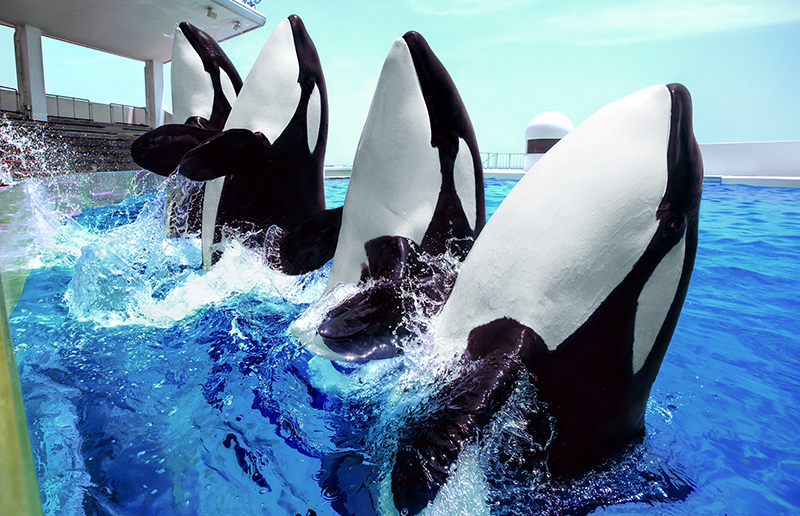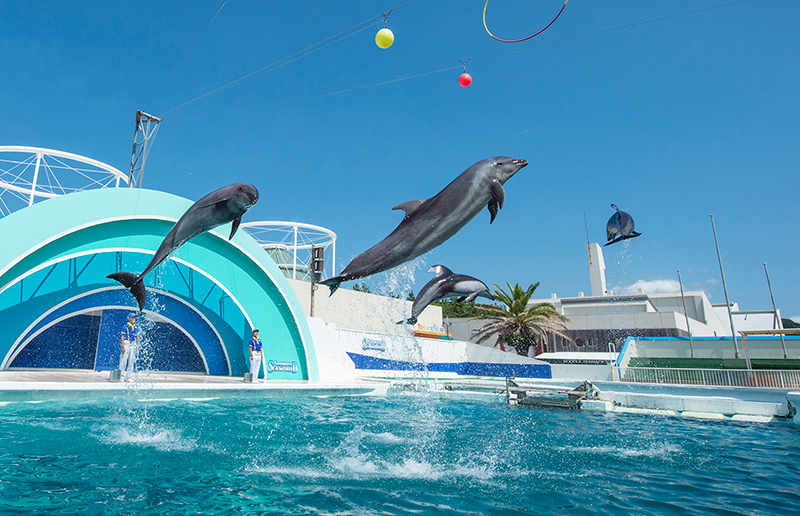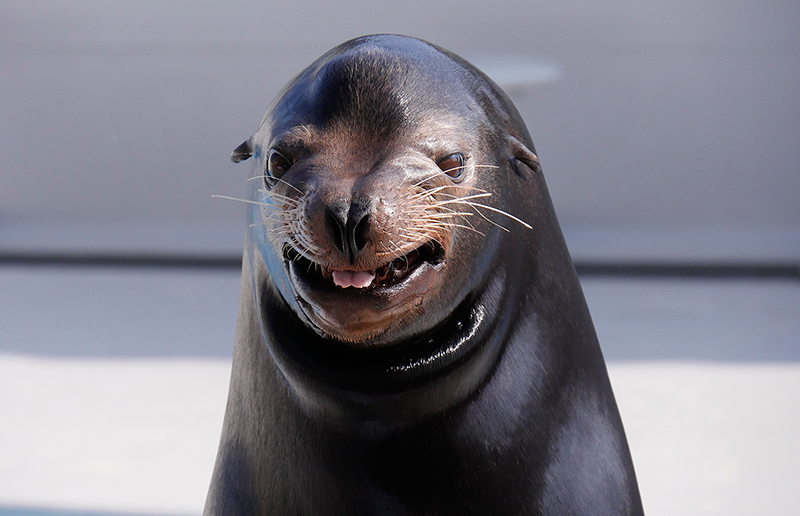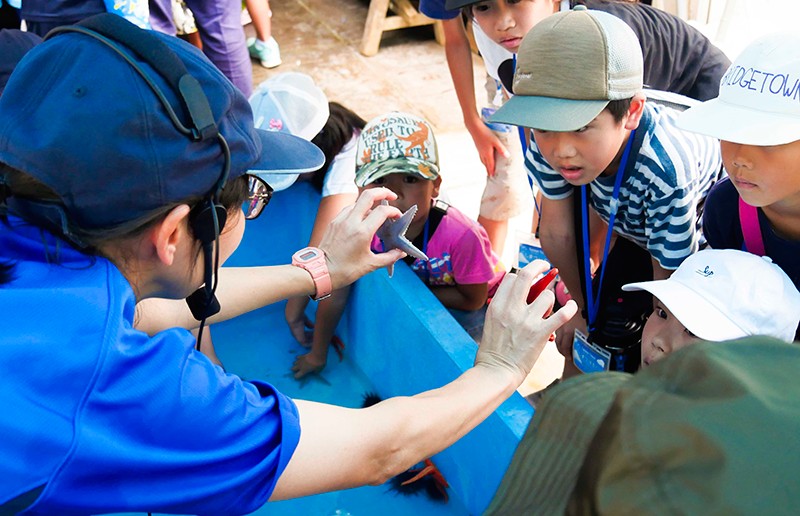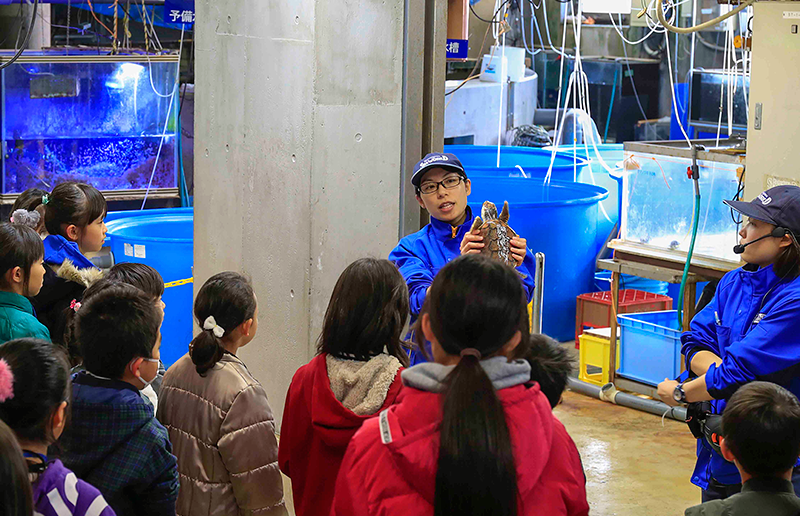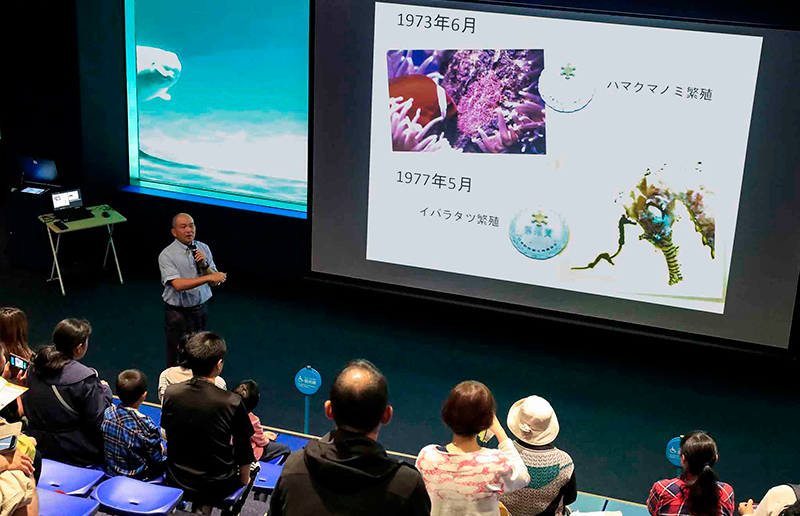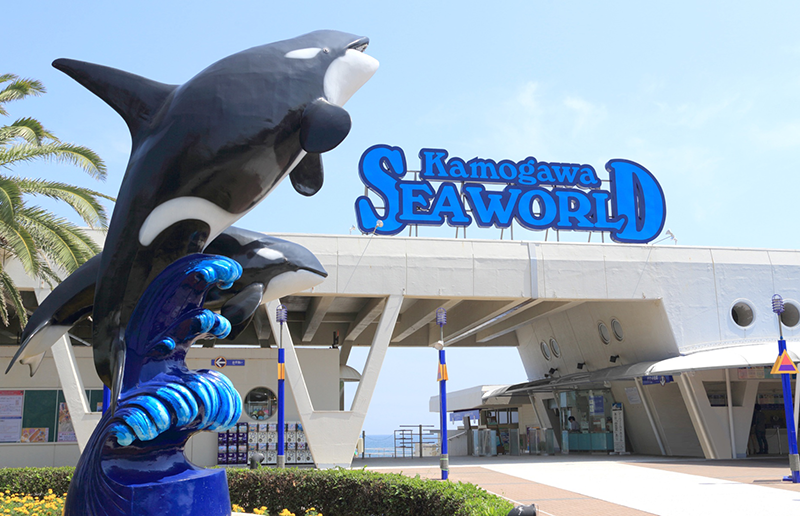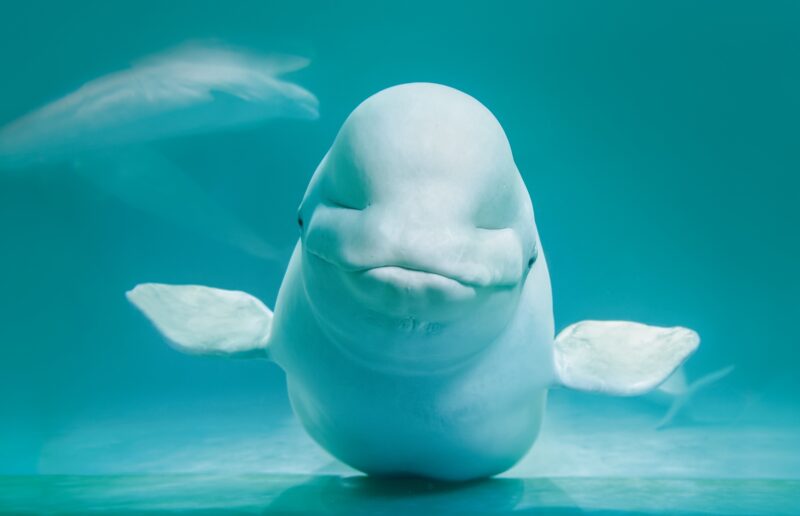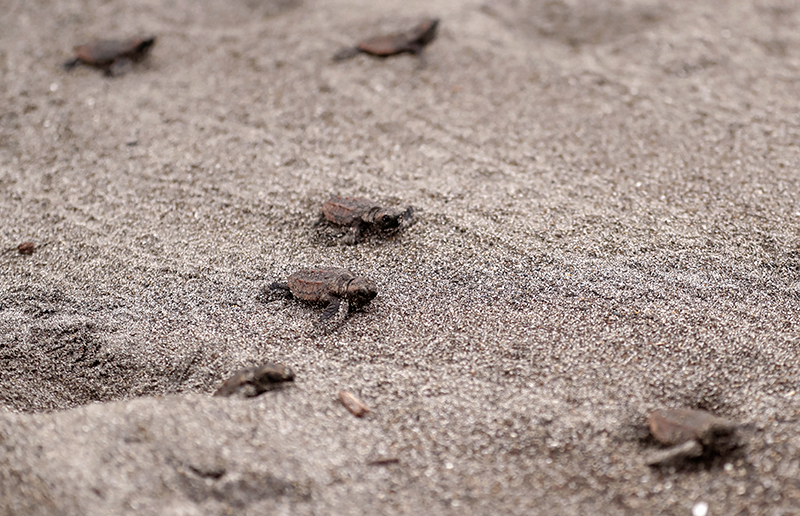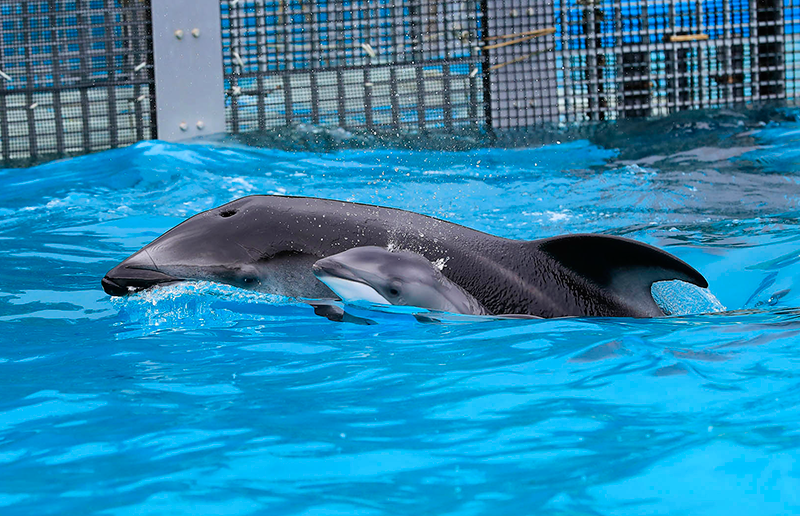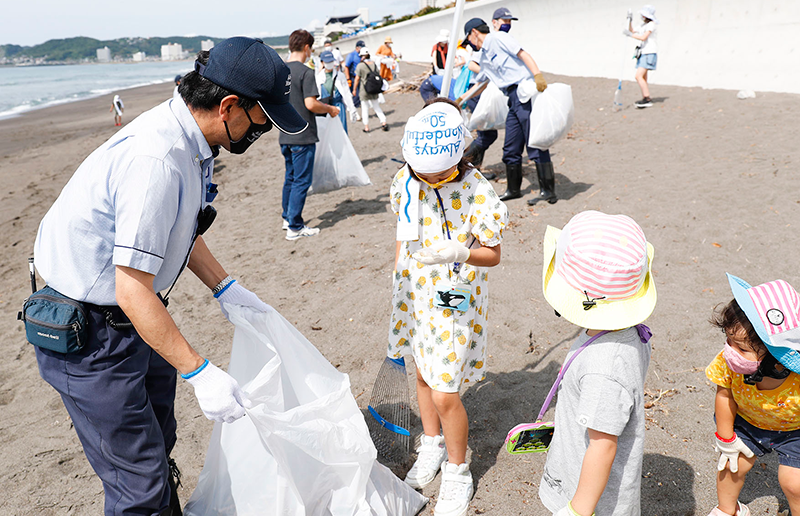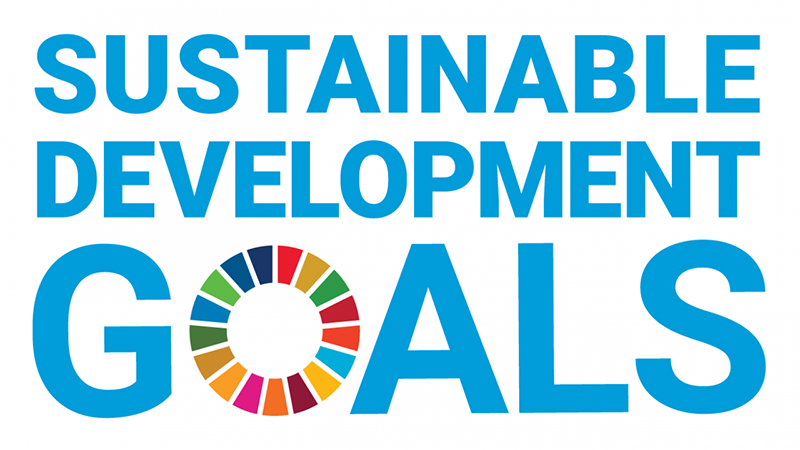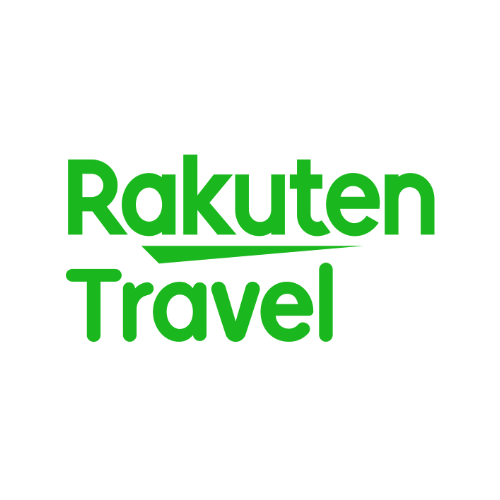Kamogawa Sea World, located in Kamogawa City, Chiba Prefecture, is a facility where you can enjoy about 11,000 sea creatures of 800 species, including killer whales, the king of the sea, dolphins, sea lions, and beluga whales. This facility, which functions as a theme park where you can enjoy performances by large animals, has a total floor area of 22,699 square meters, and is said to be the largest aquarium in the Kanto region.
50th anniversary of opening in 2020
Kamogawa Sea World, which celebrated its 50th anniversary in October 2020, opened in October 1970 with the concept of “encountering the world of the sea” and now has about 900,000 visitors annually. Since 1986, he has been operating and managing Granvista Hotels & Resorts, and various events have been held in collaboration with the hotel.
50th anniversary TV commercial
Former E-girls Dream Ami and Shachi (Rabbie-chan) co-starring CM making
What Kamogawa Sea World values: Life
The various activities and life forms of aquatic organisms (organisms that live in water such as oceans, lakes, rivers, groundwater, etc), which have rich characteristics and ecology, greatly exceed our human imagination and give us surprises and impressions.
The purpose of this facility is to experience the importance of life through encounters with such aquatic organisms, and to enjoy learning about the relationship between knowledge about aquatic organisms and the natural environment.
Through each experience, including the exhibition environment that realistically reproduces the world of the sea and performances that bring out the intelligence and athletic abilities of the animals, Kamogawa Sea World hopes to share their feelings for the sea through the brilliance of life and heartfelt contact.
Four Initiatives of Kamogawa Sea World
The exhibition theme of Kamogawa Sea World is “encounter with the world of the sea”. Through ecological exhibitions and performances that reproduce the natural environment, they provides a place where you can be moved by the warmth of life and learn the importance of life and the environment that surrounds it.
1. Educational Activities
Through educational programs such as “Monthly Meeting of Animal Friends”, “Summer School”, “Junior Trainer Experience”, “Night Adventure”, and “Special Program for School Groups”, its provide a place to learn in a fun way.
Summer School is a learning program for elementary school students that has been held since 1973, when Kamogawa Sea World opened.
In this program, you can not only receive lectures about sea creatures, but also observe killer whales and dolphins up close, touch starfish and hermit crabs, and learn through contact with real creatures, which is very popular. Yes, many children participate every year.
2. Wildlife Conservation Activities
Kamogawa Sea World contributes to the coexistence of nature and wild animals by promoting “species conservation activities” through conservation activities such as protecting injured and sick individuals, loggerhead turtle eggs, and aquatic insects.
In 2001, Kamogawa Sea World established the Sea Turtle Beach, an exhibition facility for sea turtles. Since 2002, its have been working to protect the eggs of loggerhead sea turtles that have been laid in places that are not suitable for hatching.
The number of loggerhead turtles is thought to be declining year by year due to the deterioration of their habitat (decrease in spawning grounds, accidental ingestion of plastic waste floating in the sea, etc.).
Japan is a major spawning ground for loggerhead turtles, and loggerhead turtles come to Chiba every year to lay their eggs. If there is a situation that requires protection, we take action to protect it.
3. Promotion and Research of Captive Breeding
As a place that contributes to “ex situ conservation”, it will promote breeding in captivity and conduct research related to it. In addition, it accumulate scientific knowledge through “species conservation activities” and contribute to “in-situ conservation.”
On May 29, 2019 (Wednesday), the white-sided dolphin “Diana” gave birth to a baby, and succeeded in breeding white-sided dolphins by artificial insemination for the first time in Japan.
Normally, the baby would start sucking the mother’s milk a few hours after giving birth, but the baby couldn’t suck on the nipple well, so Kamogawa Sea World decided that the baby wouldn’t be able to drink the mother’s milk as it was, so we switched to artificial feeding.
Kamogawa Sea World has succeeded in breeding bottlenose dolphins by artificial insemination in the past, but this is the first case in Japan to succeed with white-sided dolphins. Contribute to in situ conservation.
4. Collaboration with Local Communities
The cooperation of local fishermen is essential for collecting the exhibits of Kamogawa Sea World, and they are also cooperating in the release of protected individuals and in survey and research activities. In addition, they actively cooperate with events such as coming-of-age ceremonies, prefectural citizens’ days, and respect for the aged days held by government agencies. And more, cooperate with local cultural activities and local tourism associations, and cooperate with local police on traffic safety campaigns and seminars.
Tojo coastline in front of the facility and the area around the anti-sand forest. These cleanup activities also aim to support the loggerhead turtles that come ashore to lay their eggs from June to August every year while striving to beautify the local environment.
As part of the Kamogawa Sea World 50th Anniversary Project, we recruited participants from members of the Dolphin Dream Club, a group of friends of Kamogawa Sea World, and worked with employees to clean up the Tojo coast that stretches out in front of Kamogawa Sea World.
Kamogawa Sea World’s four initiatives contribute to the SDGs
These four initiatives of Kamogawa Sea World contribute to the goals of the SDGs. 1. Educational activities to get in touch with marine life 2. Wildlife conservation activities 3. Promotion and research of breeding in captivity 4. Cooperation with local communities, such as cleanup activities around coasts and sand protection forests

If you want to see a related video list, click or tap the playlist icon displayed at the top of the video screen to display the video list and search for your favorite video.
| Fees: | Adults (high school and above): ¥3,300, Children (elementary and junior high school students): ¥2,000, Infants (ages 4 and up): ¥1,300, Ages 60 and over: ¥2,700 Rates are as of April 28, 2023. Please check the official website as it may have changed. |
| Closed: | Irregular holidays |



